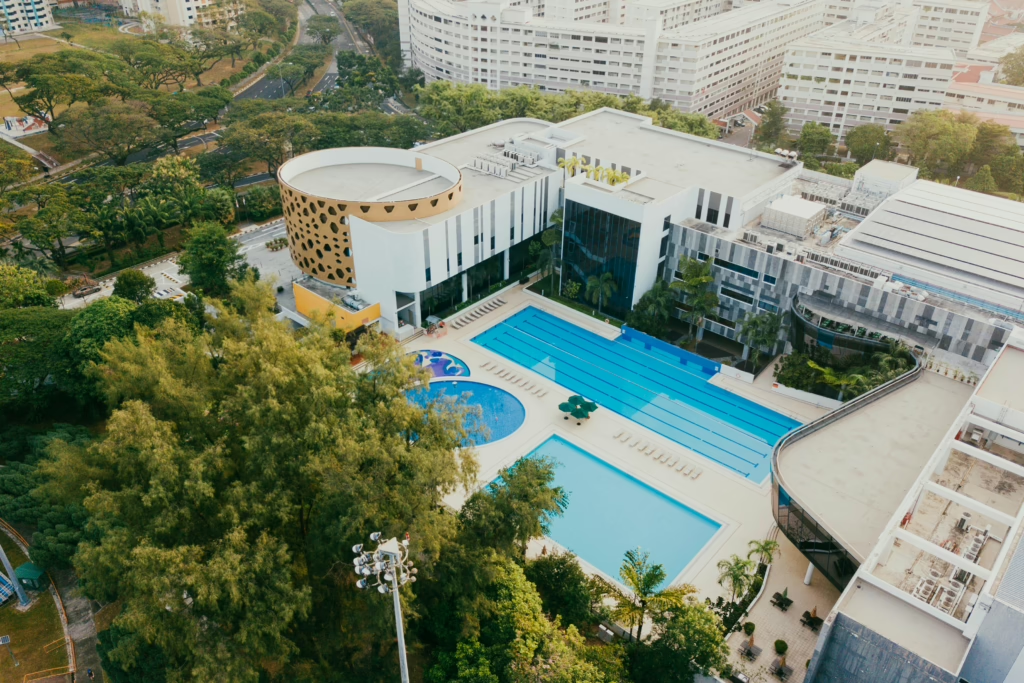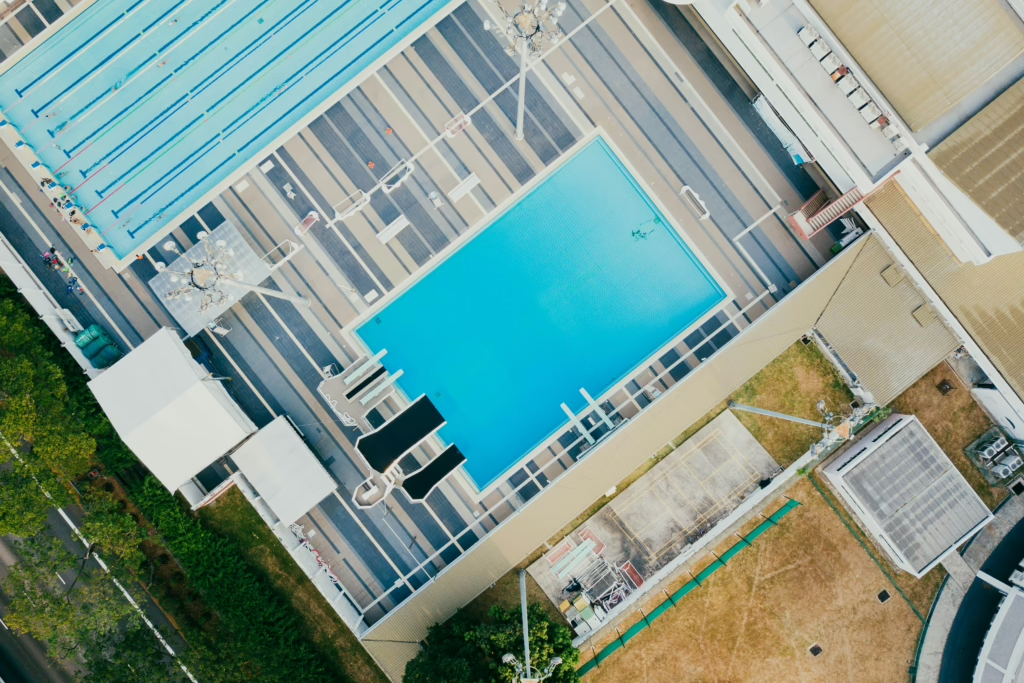Let’s be honest – there’s nothing worse than walking out to your backyard, towel in hand, ready for a refreshing dip, only to find your beautiful pool has turned into something that looks like swamp water overnight. Trust me, I get it. As a fellow San Diego pool owner, I’ve been there too.
If you’ve been frantically Googling “pool algae removal near me” at midnight while staring dejectedly at your green pool, you’re in the right place. Our perfect San Diego sunshine might be great for weekends by the water, but it’s also absolutely fantastic for growing algae. The good news? You can absolutely fix this problem, and I’m going to walk you through exactly how to do it.
Know Your Enemy: Types of Pool Algae
The Green Stuff
This is the classic algae most of us have encountered at some point – those slimy green patches that seem to multiply before your eyes. Green algae makes your water cloudy and uninviting, but here’s the silver lining: it’s actually the easiest type to treat. If you had to pick an algae problem (not that anyone would!), this would be the one to choose.
The Mustard Mystery
Ever noticed what looks like sand or pollen collecting in the corners of your pool? Surprise – it might actually be yellow algae (also called mustard algae). This sneaky variety clings to surfaces and laughs at normal chlorine levels. It’s the houseguest that overstays its welcome and requires special attention to show it the door.
The Black Spots That Won’t Budge
If you’re seeing dark, stubborn spots that stay put even after you’ve brushed your pool walls, you’ve got black algae on your hands. This stuff is the stubborn teenager of the algae world – it digs in its roots and refuses to leave without a fight. Black algae requires a specific approach and usually a bit more elbow grease to eliminate.
The Pink Stuff (That’s Not Actually Algae)
Sometimes you’ll spot pinkish slime in damp areas of your pool. Plot twist: this isn’t actually algae but bacteria! Still, it causes similar headaches and needs to be addressed before it spreads and creates unsightly staining.
Battle Plans: Effective Treatments for San Diego Pools
Chlorine Shock: The Classic Approach
Think of chlorine shock as the big guns in your algae-fighting arsenal. It’s particularly effective against green and yellow algae, essentially creating an environment so chlorine-rich that the algae simply can’t survive.
How I use it at home:
- I always shock after we’ve had a pool party or after those surprise summer rainstorms we get
- For my 15,000-gallon pool, I use about a pound and a half of shock
- I run my pump continuously afterward – no point killing the algae if you’re not going to filter out the remains!
What works for me: I’ve had the best results with HTH Super Shock Treatment, which seems particularly effective with our San Diego water. Several of my neighbors swear by In The Swim Super Shock too.
Targeted Algaecides: The Specialists
When regular shock treatment isn’t cutting it (looking at you, stubborn yellow and black algae), it’s time to bring in the specialists. Algaecides are formulated specifically to target algae cells and prevent them from reproducing.
What I’ve learned through trial and error:
- Polymer-based algaecides are great for routine maintenance without staining risks
- Copper-based products pack a stronger punch but need to be used carefully – my friend ended up with slightly blue-tinted blonde hair after swimming too soon after treatment!
My go-to products: I’ve had reliable results with Leslie’s Algaecide 60, and when things get really tough, BioGuard Algae All 60 has saved the day more than once.
The Natural Approach: Enzyme Cleaners
If you’re like my neighbor who prefers to keep things as natural as possible, enzyme cleaners are worth checking out. They work by breaking down the organic gunk that feeds algae, essentially putting the algae on an involuntary diet.
My environmentally-conscious friends have had good success incorporating Natural Chemistry Pool Magic into their routine. It’s not an overnight fix, but as part of a maintenance program, it definitely helps keep things clearer.
The Aftermath: Clearing Cloudy Water
Once you’ve successfully killed the algae, you might find yourself with clear but cloudy water – all those dead algae particles need somewhere to go. This is where clarifiers and flocculants come in handy.
After trying a few options, I’ve found Poolife TurboClear works fastest for my pool. It clumps those tiny particles together so my filter can actually catch them, and I can get back to swimming much sooner.
When to Wave the White Flag: Professional Help
Sometimes, despite your best efforts, the algae seems to be winning the war. That’s when it’s time to call in the professionals. No shame in that game – they have equipment and solutions that most homeowners don’t have access to.
When I’ve called the pros:
- When my daughter’s birthday party was three days away and the pool was still green
- After coming back from a two-week vacation to find black algae had taken up residence
- When I simply didn’t have the time or energy to deal with a major bloom
Prevention: Keeping Algae From Coming Back
Getting Your Water Chemistry Right
I can’t stress this enough – maintaining balanced water chemistry is like having a security system for your pool. Test regularly (I do it every Sunday during summer) and keep an eye on:
- pH levels (aim for 7.4-7.6)
- Chlorine (I try to stay around 2-3 ppm in summer)
- Alkalinity (80-120 ppm is the sweet spot)
- Calcium hardness (200-400 ppm prevents plaster damage)
Keep That Water Moving
Stagnant water is practically an engraved invitation for algae to move in. I run my pump at least 8 hours daily during cooler months and bump it up to 10-12 hours when temperatures soar. Think of circulation as your pool’s immune system – when it’s strong, invaders have a much harder time taking hold.
Brush, Brush, Brush
I used to be lazy about brushing my pool walls until I learned this lesson the hard way. Now I make a point to brush at least weekly, paying special attention to those shady corners and steps where algae likes to start colonies. It’s like flossing – not the most fun activity, but it prevents bigger problems down the road.
Made in the Shade
Our San Diego sunshine is intense! When we’re not using the pool, I cover it. Not only does this cut down dramatically on algae growth, but it also saves me money on chemicals and reduces evaporation. Win-win-win.
Seasonal Thinking
Our maintenance needs change with the seasons, even in “always sunny” San Diego. During our warmer months (which, let’s be honest, is most of the year), I’m more vigilant about testing and treatment. I also schedule a professional deep clean every spring to start the heavy swimming season off right.
Let’s Talk Money: What This All Costs
The DIY Route
If you’re handling a typical green algae situation yourself, here’s roughly what you’ll spend:
- Good quality shock: About $20-25 per treatment
- Decent algaecide: $25-35 for a bottle that should last several treatments
- Clarifier: Around $15-20 per treatment
- Test strips or kit: $10-40 depending on how fancy you want to get
Calling in the Pros
When I’ve needed professional help, I’ve typically paid:
- Basic algae treatment: $125-175 for my medium-sized pool
- Major black algae situation: Closer to $250-300
- Complete drain and acid wash (the nuclear option): $350-500
The Long Game
I’ve found that spending about $100-125 monthly on regular professional maintenance has actually saved me money compared to the years when I tried to handle everything myself and ended up with major algae problems several times a season. Sometimes the cheapest option isn’t actually the most economical in the long run.
Frequently Asked Questions:
1. Can I swim right after treating for algae?
I wish! But no – you need to wait until chlorine drops back to safe levels (1-3 ppm) and the water clears up. Usually takes a day or two, depending on how much treatment was needed.
2. Will algaecide change my pool water color?
Some copper-based ones might give a slight tint temporarily. My neighbor’s pool had a barely noticeable bluish hue for about a day after using a copper treatment, but it cleared up with filtration.
3. Keep adding chlorine but still get algae – what gives?
This happened to me too! Usually means either your pH is off (making the chlorine less effective), your circulation isn’t great, or San Diego’s sunshine is burning through your chlorine faster than you’re adding it.
4. Once I treat it, will the algae stay away?
In our climate? Without regular prevention, that algae will be planning its comeback tour within days. Consistency is key!
5. Should I just handle this myself or hire someone?
For a small outbreak, DIY is totally doable. For black algae or if your pool looks like pea soup, sometimes paying a pro saves you time, frustration, and even money in the long run.
6. How often should I shock my pool here in San Diego?
During our hot months, I shock every two weeks preventatively. During winter (such as it is here), once a month usually does the trick.
Final Thoughts
Look, keeping a pool crystal clear in San Diego takes some work, but it’s absolutely doable with the right approach. Remember that consistency beats intensity – regular maintenance will always be easier than fighting a full-blown algae invasion.
If you’re looking for dependable “algae removal near me,” give PoolLogic San Diego a call. I’ve used them for years, and they really know their stuff with our specific local conditions. The best part? Their setup process takes literally 5 minutes – you call, they ask a few questions about your pool, and they can usually get someone out within a couple of days.
Ready to enjoy your pool again without worrying what might be growing in it? Take it from someone who’s fought (and won!) the algae battle many times – with the right approach, you’ll be back to crystal clear water before you know it. Your perfect San Diego pool days are still ahead!



